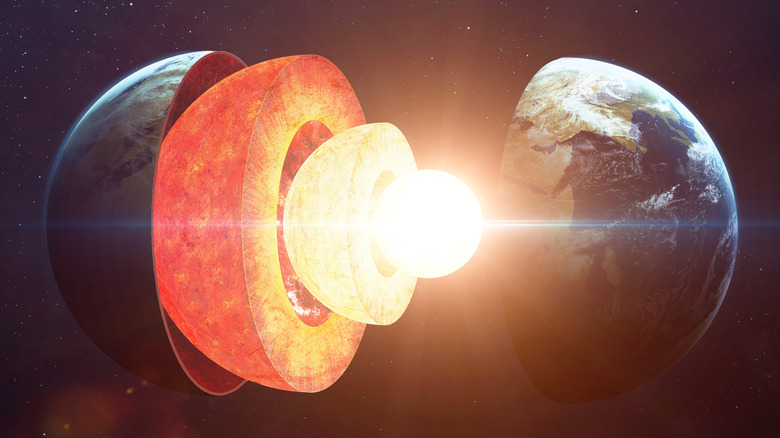Scientists Just Made A Big Discovery About The Earth's Crust
According to SpaceRef, "Earth's outer shell consists of about 15 shifting blocks of crust," that have been moving over millions of years to form the continents and unique landforms that currently exist. The tectonic plate theory is widely accepted, but what has remained a topic of hot debate is when exactly the movement of these gigantic plates first began, transforming Earth from a sphere of rocks and lava into the habitable planet that it is today. New research suggests the movements first began roughly 3.8 billion years ago.
In a paper published in AGU Advances, Harvard scientists studied zircon crystals — nearly indestructible crystals that are known to last billions of years and serve as a sort of geological time capsule — and noticed a visible change happening in their geochemistry some 3.8 billion years ago. The team looked at the hafnium isotope, oxygen isotope, and trace element compositions of these zircon crystals collected from South Africa in 2017.
Of the 3,936 samples collected, 33 were at least 4 billion years old, which was an impressive feat as zircons that old are quite rare. Analysis of the crystals suggests that the rate of crystal formation picked up pace roughly 3.8 billion years ago. Zircons with the aforementioned age profile had geochemistry similar to crystals formed in subduction zones, areas of tectonic plate collision where one slides under the other and into the mantle layer of Earth.
Peeping into the most ancient time capsules
The team, which also had experts from Stanford and Louisiana State University, studied the hafnium isotope chemistry in the zircon crystals and noticed that all of them witnessed a geochemical shift some 3.6 to 3.8 billion years ago. Even though scientists are unsure whether subduction zones existed 3.8 billion years ago, the chemistry of crust material is a clear sign that tectonic plate movement happened in some form.
The study is of critical importance since it involved geochemical samples that were apparently created at the end of the Hadean Eon — the first 500 million years of Earth's life. Almost no pre-Hadeon material is known to have survived, which makes the test zircons one of the oldest known relics of Earth's evolution. Titled "Destabilization of Long-Lived Hadean Protocrust and the Onset of Pervasive Hydrous Melting at 3.8 Ga," the study found signatures of a "protocrust" that is said to have formed as a result of the first tectonic plate movement on Earth.
"Earth's early crustal processes may have changed permanently between 3.8 and 3.6 Ga," the study postulates in its concluding notes. In comparison, a 2020 study published in Science Advances proposed that Earth's tectonic plates were already in motion 3.2 billion years ago. There are also studies claiming that tectonic movement was happening from the very beginning of Earth's existence.

